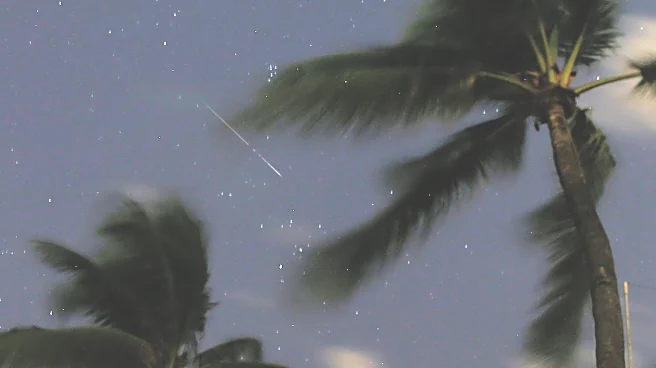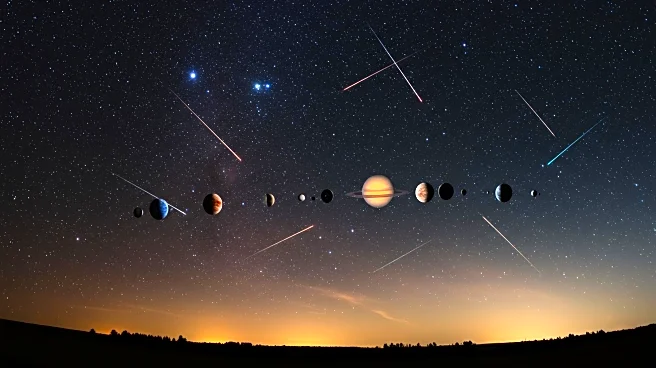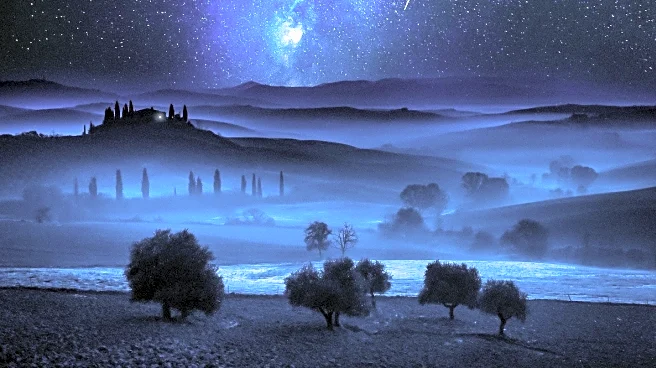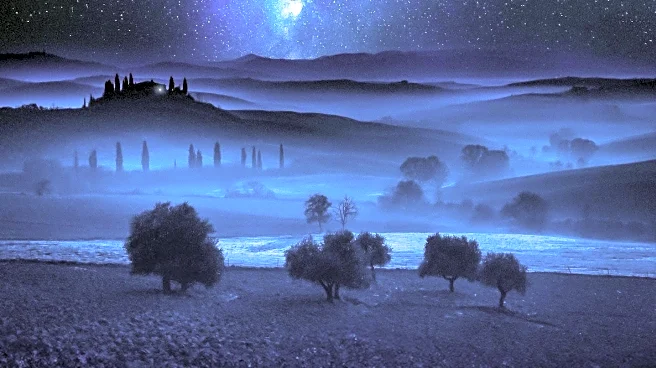Rapid Read • 7 min read
The Perseid meteor shower, known for its spectacular display, is set to peak early Wednesday. This year, the event coincides with Venus and Jupiter appearing close together in the sky, resembling a bright star. However, viewing conditions may be affected by a bright moon, which is expected to dampen the visibility of meteors during the predawn peak. Thaddeus LaCoursiere, planetarium production coordinator at the Bell Museum in St. Paul, Minnesota, notes that under ideal conditions, the Perseids can produce 60 to 100 meteors per hour. Due to the moon being 84% full, skywatchers might see only 10 to 20 meteors per hour. The American Meteor Society suggests waiting a week past the peak for better viewing conditions. The Perseid meteor shower originates from debris left by comet 109P/Swift-Tuttle, and viewing will last until August 23.
AD
The Perseid meteor shower is a significant astronomical event that attracts skywatchers and enthusiasts annually. The convergence of Venus and Jupiter adds a unique visual element to this year's display. However, the bright moon poses a challenge for optimal viewing, potentially reducing the number of visible meteors. This situation highlights the importance of timing and environmental conditions in astronomical observations. The event offers educational opportunities about celestial phenomena and encourages public interest in astronomy. It also underscores the impact of natural light sources on observational activities, which can influence planning for future astronomical events.
Skywatchers are advised to plan their viewing sessions for a week after the peak, when the moon will be less bright, allowing for better visibility of the meteor shower. The next major meteor shower, the Orionids, is expected to peak in late October, providing another opportunity for enthusiasts to observe celestial events. As the Perseid meteor shower continues until August 23, those interested in astronomy can still enjoy the spectacle under improved conditions. This period allows for continued engagement with the night sky and fosters a deeper appreciation for astronomical phenomena.
AD
More Stories You Might Enjoy











